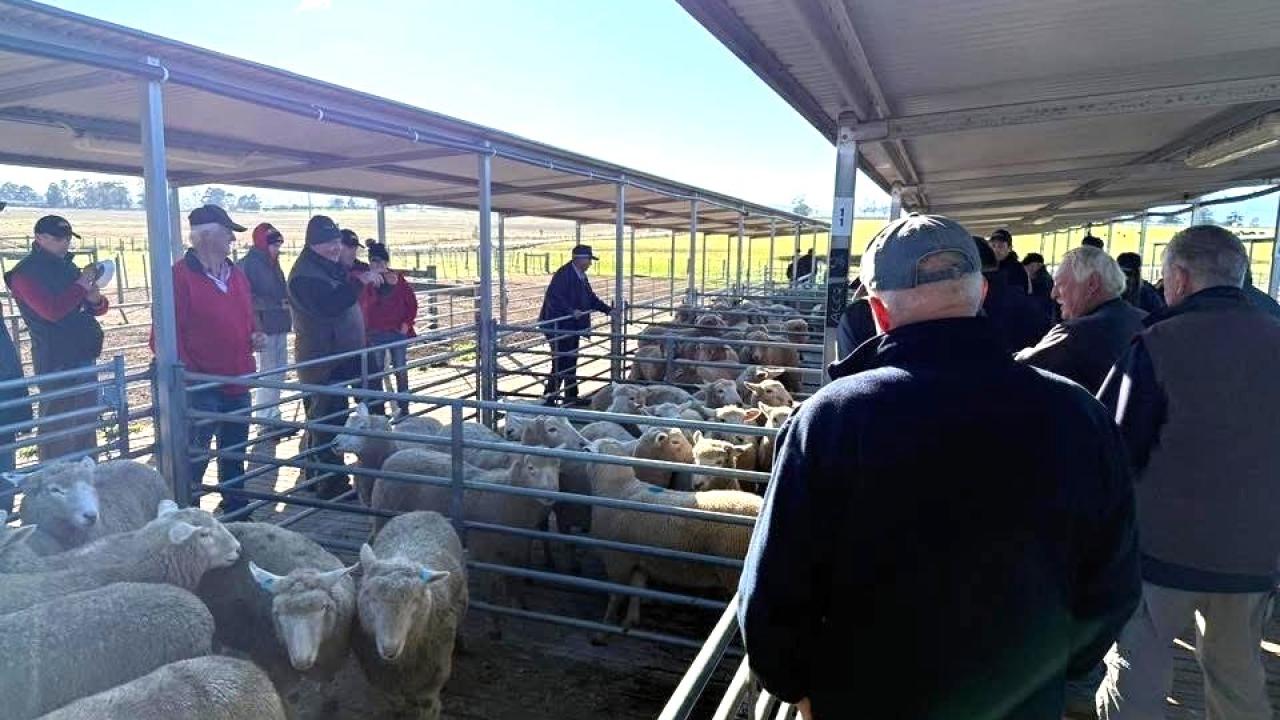Ram prices jump by more than 12,000% in a few months

Fierce bidding at Powranna on Tuesday saw record mutton prices and top dollar paid for lambs, but it was the price of rams that had livestock producers talking.
Lucky to fetch $2 just a few months ago, they were selling for up to $250 in one of the biggest yarding of sheep ever seen at a winter sale.
The frenzied buying came after a Tasmanian record for mutton was broken with eight Hampshire Down ewes from Manganana selling for $278.
Nationally mutton prices reached 780.54c/kg carcass weight, beating the previous record of 725c/kg set in March 2020.
Prime lamb fetched on average $262 and as high as $310, store lambs averaged $194, and hoggets averaged $170.
Major Australian meat processing and exporting business Australian Lamb Company paid the top price for the rams at Powranna.
ALC livestock buyers Tom Archer said it was motivated by demand from more than 70 countries it supplies worldwide, particularly the Asian market, and a determination to keep its Colac processing facility operating in the face of limited supplies.
“We’re driven by the fact that we employ 950 workers in a regional town and we can’t afford to shut it up just to restart in a few months’ time when the spring flush hits,” Mr Archer said.
“I think we’re in for three hard years on the processing side but it’s very good for farmers.”
Mr Archer said that in the three years he’s been buying at Powranna he’s seen the facility really come into its own, with increased numbers going through the saleyard.
“Since coming under the ownership of Minerva Foods in 2022, our throughput has increased dramatically, we’re talking up to 75,000 head a week, and we’ve been buying a lot more fat lambs and mutton, and there’s been a flow-on effect to rams.
“There are six processors pushing hard to secure stock so that rivalry is always going to push up prices.
“Seasonal conditions saw unusually high numbers sold in the first half of the year instead of being spread out and now that they’ve gone we have a gap until the new season lambs come through.
“We’re looking at good lamb prices for the next three years at least, flatlining a bit next year before numbers start to rebuild in 2027.”
Elders Livestock agent Daniel Morice said it’s been a strange few months at Powranna, with yardings of up to 6000 animals.
“In the chase for protein buyers like ALC and TQM are bidding hard, and it’s going to be interesting to see where it all ends,” he said.
“Ultimately meat has to be affordable for people to buy, but I can’t see supermarkets sustaining $13-$14 per kilo for a leg of lamb.”
TasFarmers Livestock Council Chairman George Shea agreed that record mutton and lamb prices are likely to keep being broken.
Mr Shea said a lack of supply combined with unprecedented demand for red meat globally was behind the surge.
“South Australia, Victoria, Southern NSW and Tasmania have either been in full drought or close to drought,” he said.
“There’s been a lot of de-stocking, so a lot of females have been processed and lambs were sold early because it was so dry on the mainland.
“The processors ramped up their production numbers to handle the increase in livestock coming through.
“The large numbers are now declining and they’re competing fiercely for whatever stock is available to keep kills going.”
Mr Shea said weather conditions would dictate if lamb and mutton prices stay high.
“Processors just can’t afford to keep paying more and more, especially if they are losing money on really expensive stock.
“But either way, the sustained levels are going to be with us for quite some time.
“If the drought continues to break, you’ll see a lot of females that normally would go to slaughter going back into the paddock to help rebuild numbers.”
Mr Shea said that red meat prices at the supermarket were likely to increase as a result of how much livestock was selling for at the saleyards.
“Hopefully, we get some good rains in the spring to allow farmers in Southern Australia to start restocking and rebuilding numbers.
“The last thing we want is to go back into another dry spell, which doesn’t sit well for processors down the track.
“We need numbers to build back up again to support the whole industry.”




Add new comment